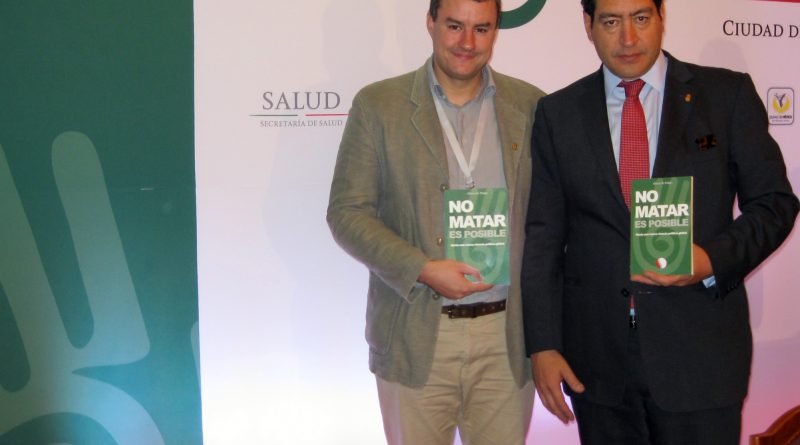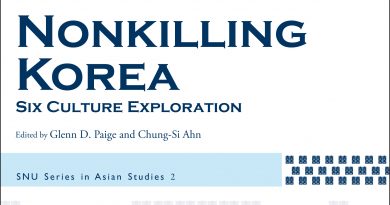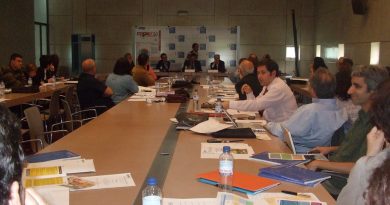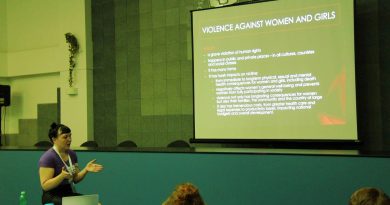Huffington Post Article: Nonkilling or 9mm Tacos for Breakfast
How much does one human life cost? As we try to measure and place a price on every single aspect of our existence, can we dare to place a dollar tag on our necks? Beyond the per capita amount of state-funded education and health care, how much would the thousands of hours of parental and kin dedication be worth? Can the impact of a human being through his or her lifespan be related to a certain number of digits?
But we do know that a 9mm bullet, the most widely used handgun cartridge, has an average price of 20 cents. These scornfully cheap objects were behind 21,700 intentional homicides in Mexico last year, and are sadly on track toward a similar figure at the end of 2013. That adds up to $4,340 in bullets. An unfair balance by all measures. The Mexico Peace Index, to be launched on Nov. 28 by the Institute for Economics and Peace, should provide a vivid picture beyond dull official statistics.
Meanwhile, a shift is starting to occur in a country that has mostly reacted to violence through coercive means, often leading to increased killing. Mexico’s government has teamed up with the World Health Organization’s Violence Prevention Alliance to look at stopping violence, particularly lethal violence, before it happens. Using the WHO’s definition of violence as “a preventable disease”, researchers, public health practitioners and policy makers will be considering the evidence and good practices to find new ways to bring the death toll down.
Significantly, Mexico’s Department of Health chose one book to publish and distribute among the approximately 1,000 participants of the “Violence Prevention Week”, to be held on Nov. 11-15. Originally published in 2002 by University of Hawaii Political Scientist Glenn D. Paige and just recently translated into Spanish, the book Nonkilling Global Political Science represents a paradigm shift in how we understand the role of lethality in our society, and how we could do without it.
Paige sets the goal in zero. In other words, a society where there are no killings, threats to kill, conditions conducive to killings or weapons designed to kill other human beings, including 20 cent 9mm cartridges. The concept of “nonkilling” introduced in the book is distinct from other more general approaches (such as “peace”, “nonviolence” or “human rights”) insofar as it is measurable and can be articulated as a policy to progressively reduce killings with the distant but conceivable horizon of a killing-free world.
It is this tangible approach, however remote the generational effort to end killing may seem, that captivated the national violence prevention team in a country with a homicide rate of 22 in 100,000, compared to just under 5 in 100,000 for the U.S. Taking killing and its prevention seriously is a first but important step toward establishing a nonkilling society as national goal. It will require commitment from both government and other actors in society, and a catalytic effort to coordinate a transformation that must encompass every aspect from early childhood parenting to global security arrangements.
The story of how a book on nonkilling written in the islands of Hawaii reached Mexico can be related to those of an additional 29 translations published around the world, including Arabic, Russian, Hindi and Urdu. To provide just one example: In 2003 the book is found on the Internet by a Haiti official and scholar, who translates it into French and establishes a local center to promote it in 2005; the French translation makes its way to the DR Congo, where it’s transformed two years later into 4,500 copies of an abridged Kiswahili version and used in trainings all around the Great Lakes region; the trainings and discussions inspire the creation of a small “nonkilling school” with 200 pupils in the village of Kazimia, by Lake Tanganika. Every book has its own story.
In a world where military research hoards 30 percent of global R&D resources (5 times more than what is assigned to medical research and 10 times more than what food research receives), the Hawaii-based Center for Global Nonkilling has recruited more than 700 scholars in 300 academic institutions in 73 countries to become involved in 19 disciplinary research committees that have been taking the scientific basis for nonkilling further during the past 4 years. Their most recent publication Nonkilling Security and the State (2013) joins volumes on psychology, anthropology, history, geography, engineering, futures and linguistics, all available for free download for wider dissemination among students and scholars.
Perhaps it will take one of the world’s billionaires, maybe even Mexico’s Carlos Slim, to decisively support the efforts of the growing community of concerned activists, researchers and policy-makers by building and consolidating a global center to promote the vision of a nonkilling society — a society where human life continues to be priceless and bullets unnecessary.




